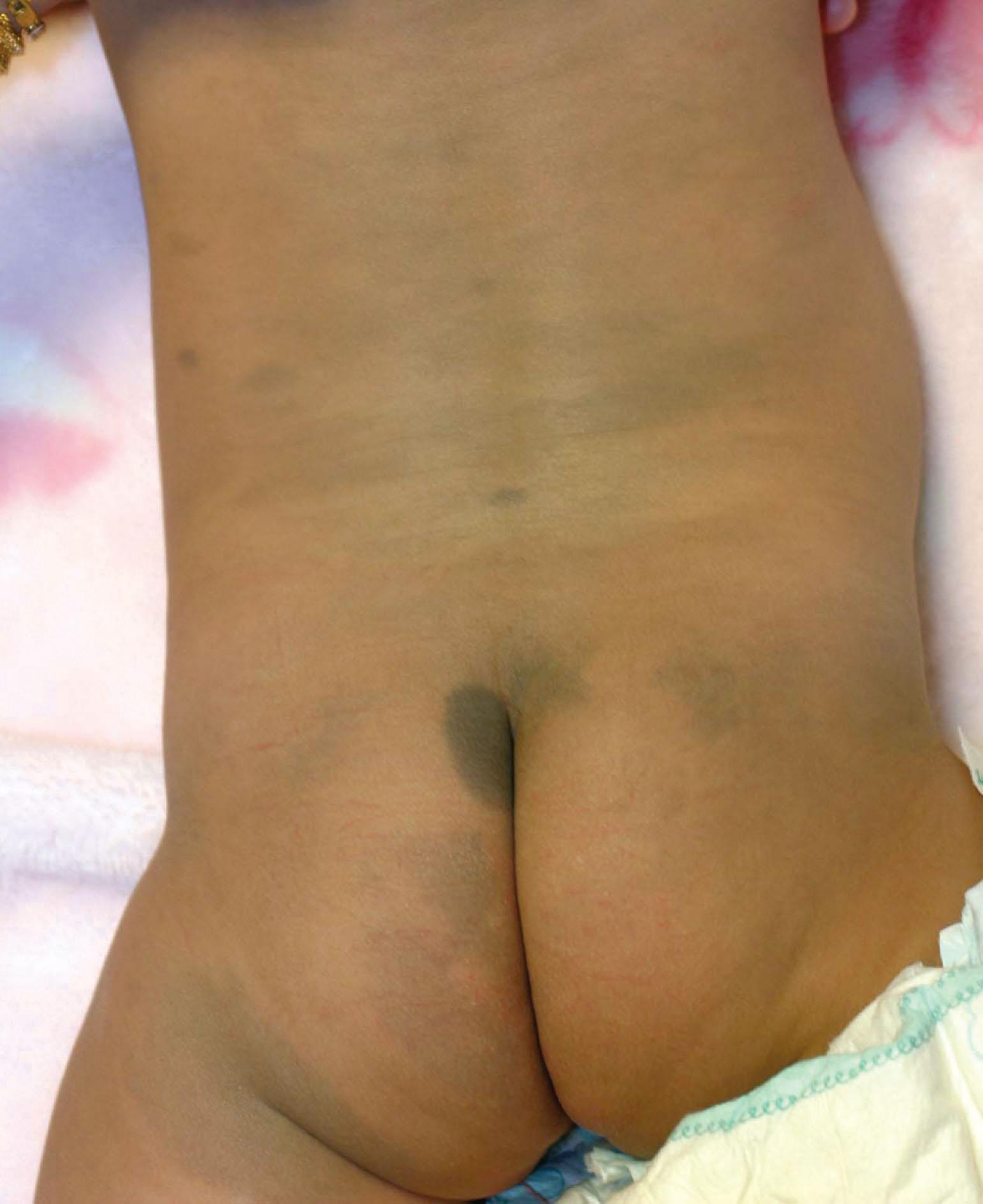Physical Address
304 North Cardinal St.
Dorchester Center, MA 02124
Birthmark is a term that describes congenital anomalies of the skin. It should not be used as a definitive diagnosis because congenital skin lesions vary greatly in their appearance and prognosis. The differential diagnosis of various birthmarks is listed in Table 193.1 .
| COLOR/LESION | BIRTHMARK | LOCATION | OTHER FEATURES |
|---|---|---|---|
| Brown/macule or patch | Café-au-lait macule | Variable | May be associated with genetic syndromes |
| Brown (<40 cm)/patch or plaque | Congenital melanocytic nevus | Variable | Low risk of melanoma |
| Brown (>40 cm)/patch or plaque | Giant congenital melanocytic nevus | Trunk most common | Risk of melanoma and neuromelanosis |
| Brown or skin colored/plaque | Epidermal nevus | Variable, trunk and neck | May enlarge with time |
| Red/patch | Port-wine stain (nevus flammeus) | Variable, face most common | May be associated with Sturge-Weber syndrome |
| Red/patch | Salmon patch (nevus simplex) | Glabella, eyelids, nape of neck | Improves or resolves with time |
| Red/papule or plaque | Hemangioma | Variable | May be associated with liver hemangiomas, airway hemangiomas, and PHACE syndrome |
| Gray-blue/patch | Dermal melanocytosis | Lower trunk (Mongolian spot); face (nevus of Ota); posterior shoulder (nevus of Ito) | Nevus of Ota may be associated with ocular pigmentation |
| Blue-purple/plaque | Venous, lymphatic, or mixed malformation | Variable | Intermittent swelling and pain |
| Yellow-orange/plaque | Nevus sebaceus | Head and neck | Malignant and benign tumors may arise within |
| Yellow-orange/papule | Juvenile xanthogranuloma | Head and neck most common | Spontaneously involutes |
| Yellow-brown/papule or plaque | Mastocytoma | Variable | Spontaneously involutes |
| Hypertrichosis/plaque | Smooth muscle hamartoma | Trunk | |
| Hypertrichosis/tumor | Plexiform neurofibroma | Trunk most common | Associated with neurofibromatosis type 1 |
| White/patch | Nevus anemicus | Variable | Surrounding redness and telangiectasia |
| White/patch | Nevus depigmentosus | Variable |
The most frequently encountered pigmented lesion is dermal melanocytosis , which occurs in 70–95% of African, Hispanic, Asian, and Native American infants and in approximately 5% of White infants. This is a congenital lesion caused by entrapment of melanocytes in the dermis during their migration from the neural crest into the epidermis. Although most of these lesions are found in the lumbosacral area (Mongolian spot), they also occur at other sites, such as the buttocks, flank, extremities, or (rarely) the face ( Fig. 193.1 ). Single or multiple poorly demarcated, gray-blue patches up to 10 cm in size may be present. Most lesions gradually disappear during the first few years of life; aberrant lesions in unusual sites are more likely to persist.

Become a Clinical Tree membership for Full access and enjoy Unlimited articles
If you are a member. Log in here